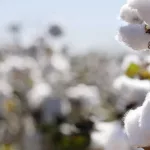Spiraling of cotton prices – avoid panic buying – SIMA
Coimbatore: The predominantly cotton based Indian textiles & clothing industry has been taking advantage of the home-grown cotton that were highly competitive when compared to the international prices despite high capital cost, tariff barriers, high power cost, etc. Consequent to the removal of cotton from the Essential Commodities Act from February 2007 and also inclusion of cotton on the MCX cotton trading platform, the multinational cotton traders started dominating the Indian cotton economy by taking advantage of cheaper funds and hedging facilities in the international market.
The predominantly MSME spinning segment in India which account over 85% of the total spinning capacity, often struggle to procure cotton for longer period during the peak cotton season (November to March) due to limited working capital at a higher interest rate and 25% margin money. To fulfill the cotton requirement during off-season (April to October), the spinning segment is forced to buy cotton from the trade and imports. The 11% import duty prevailing on all other cotton except ELS cotton has made the industry to rely on traders for cotton during off-season. The situation gets aggravated whenever there is a steep increase in Minimum Support Price (MSP) announced by the Government and market price ruling below the MSP that necessitates Cotton Corporation of India (CCI) to exercise MSP operations. Since the cost of procurement and production for CCI is higher by around 5% when compared to the private traders, the advantage of MSP procured cotton is being derived by the multinational traders. As a sequel to this, speculation of cotton price has become a routine feature despite various policy initiatives by the Government.
On the global front, the cotton production in Australia is expected to be 4.7 million bales and arrival is expected from May 2024 onwards. Brazil is expecting their largest cotton production in history of about 14 million bales during the current cotton season when compared to last year production of around 11 million bales and going to be the largest exporter of cotton in the world. Their crop arrival is expected to come from June 2024 onwards. Hence, the world is expected to have sufficient quantity of cotton post July 2024 onwards.
Since fabric, garment and made-ups segments normally enter into three to four months export contract during the months of February and March, the manufacturers of the value-added final products often find it very difficult to meet the export commitments and make complaints about the increase in yarn prices, which is inevitable due to speculative cotton price. To sort out this recurring cotton pricing issue, there is an urgent need to have a comprehensive “National Fibre Policy”, which would ensure raw material security. The Policy would also pave way to develop harmony among the textile manufacturing segment, resulting in creating a level playing field among all the industry-players.
 In a Press Release, Dr. S. K. Sundararaman, Chairman, The Southern India Mills’ Association (SIMA) has stated that the cotton price has increased by 10 to 12% within 15 days and created a panic situation across the textile value chain. He has stated that cotton price for Shankar-6 variety was ruling at Rs.55,300/- per candy and fluctuating by few hundreds of Rupees, has now increased to Rs.62,000/- per candy.
In a Press Release, Dr. S. K. Sundararaman, Chairman, The Southern India Mills’ Association (SIMA) has stated that the cotton price has increased by 10 to 12% within 15 days and created a panic situation across the textile value chain. He has stated that cotton price for Shankar-6 variety was ruling at Rs.55,300/- per candy and fluctuating by few hundreds of Rupees, has now increased to Rs.62,000/- per candy.
Dr Sundararaman has said that the Committee on Cotton Production and Consumption (CoCPC)” has estimated 316.57 lakh bales as the crop size, 12 lakh bales as the imports and 310 lakh bales as the consumption, 25 lakh bales as exports and 57.65 lakh bales as closing stock for the cotton season 2023-24. He has added that the capacity utilization of the mill sector has increased to 80% to 90% from the level 70 to 75% and as per the market information around 20 lakh bales have already contracted for exports. He has pointed out that the demand for export of cotton will come down as the cotton price is fast approaching the international price and therefore, the estimated closing stock, which is one of the highest would ensure adequate availability of cotton.
SIMA Chief has stated that around 215 lakh bales of cotton have arrived in the market till February 2024 and arrival per day continues to be more than a lakh bales, except for few days. He has stated that as the significant portion of the good quality cotton of this season has arrived the market, the steep increase in price will only benefit the trade and not the farmers, which would have serious impact on the industry till the end of the season.
Taking into consideration of the global cotton scenario, SIMA Chief said that the global cotton availability is expected to be higher post July 2024 due to increased production in Australia, Brazil and other countries. He opined that the ICE cotton future is also expected to experience a huge inverse post July 2024 which in turn would soften the Indian domestic cotton prices. With that view, Dr. S.K Sundararaman has strongly advised the spinning mills to avoid panic buying, as the cotton supply position looks comfortable. He pointed out that the global cotton supply position and the stock-to-use ratios are also comfortable in most of the cotton consuming countries. Therefore, he advised the mills to ignore the rumours and exercise extreme caution while procuring the cotton.
SIMA Chairman has appealed to the Hon’ble Union Minister of Textiles to advise CCI which has procured around 22 lakh bales of cotton and sold less than a lakh bales so far, to adopt the policy followed by CCI from June 2016 (off-season of 2015-16) to maintain price stability and sustain global competitiveness. He said that though CCI had a limited volume of three lakh bales during 2016, the policy of releasing CCI cotton whenever domestic price exceeds international price (ICE futures) and suspending the sales whenever domestic price went below the international price (ICE futures) greatly benefited the industry to meet export commitments. He also appealed to the government to exempt all cotton varieties from 11% import duty during April to October as was done during April 2022 – October 2022 to avoid the traders adopting import parity pricing and affecting the export competitiveness. He stated that levying 11% import duty during the peak season and exempting the same during the off-season would create a win-win situation both for the farmers and the industry. This would also facilitate the value-added segments to do cost correction on a regular interval and aid in boosting the exports, taking advantage of various other proactive initiatives of the Government.





